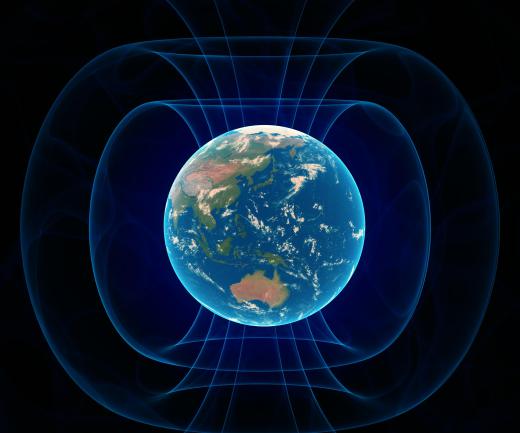What is an EMP?
 Michael Anissimov
Michael Anissimov
An electromagnetic pulse (EMP) is a quick, powerful blast of electromagnetic energy that ranges across a significant portion of the electromagnetic spectrum. The most frequently cited source of an EMP is a nuclear weapon. Indeed, the easiest way to generate the energy for an EMP is through an abrupt chemical or nuclear explosion, and devices for creating EMPs in the absence of such an explosion are known to be relatively weak.
The general idea of an EMP is that it wreaks havoc on electronics, but leaves other physical structures mostly untouched. Real-life electromagnetic pulses released by high-altitude nuclear tests have fused power wires, triggered burglar alarms, and caused breakage in radios, TVs, and power lines as far as 1,500 kilometers (930 miles) away. The source of this disruption is a large-scale, intensely fluctuating magnetic field created when high-energy photons from an explosion knock electrons from their atomic orbits. This disruption becomes trapped within the earth’s magnetic field, leading to a coherent oscillating electric current.

In near-future science fiction, the EMP is seen as a potent superweapon that disables all sophisticated electronics in a national or even continental region. Because the EMP can extend all the way to the horizon with sufficient energy, a nuclear weapon detonated in near-earth orbit could in fact disrupt electronics in a huge region. In contrast, a nuclear weapon detonated close to the ground can do little damage with its EMP – for example, planes that drop atomic weapons continue to function even if they are within the line-of-sight of the nuclear explosion.

To release an EMP capable of doing damage to a wide area, the nuclear weapon that triggers it must be relatively large – in the range of 10 or more megatons, which is almost three orders of magnitude more powerful than the Hiroshima and Nagasaki nuclear bombs. For releasing a powerful EMP in a smaller area, the explosively pumped flux compression generator has been suggested, which uses high explosive to essentially achieve the same effect. The world’s militaries have tested prototypes of such a weapon, but it has not been widely deployed.

The EMP is presented in fiction or games as a weapon suitable for use against machines, cyborgs, or nanobots, but useless against biological creatures. In reality, machines can easily use processing and actuating elements based on mechanical and chemical principles rather than purely electrical ones, making them as immune as a human being to an electromagnetic pulse.
AS FEATURED ON:
AS FEATURED ON:













Discussion Comments
I saw someone else talking about that radio blog show, and I also listen to them. I know that Chet Nagel is going to be on the show and that should be a good show, like the other one that they mentioned before. These radio shows are hosted by EMPact America.
I personally feel like there is only one way to protect some of our electronics. That would be by making a Faraday cage. I've looked into making one (because it seems to be cheaper than buying one.) I've been trying to find a good blog that can tell me how to make one. I've come across a few, but I'm going to listen in on this Radio Blog show this Wednesday, because there's a guy named Randy Tolman that's going to be talking about different Faraday cages (and hopefully how to make one!)
@everetra - I have a friend who works in the electrical industry. He tells me that most of the transformers, relays, etc. that you find in an electrical utility’s infrastructure can in fact resist an EMP attack.
I think this protection is built into the system by design because these units are meant to be fault protection devices should there be a blackout or a rollout. I think that makes sense. Hopefully the lights will still be on as the aliens are zapping us.
@MrMoody - I would assume that they are using EMP technology as you said. This begs the question: what kind of EMP protection technologies should we start investigating now, whether such an attack comes from a terrestrial or an extraterrestrial enemy?
I think there must be some way to counteract the electrical shock waves generated by these bombs. Either that or I’ve been watching too much Star Trek.
@miriam98 - Did you ever watch those UFO shows on television and wonder why it is that every time a UFO arrives on the scene, electrical circuits go haywire?
I mean, radios go out, car and watch batteries get shorted out and everything comes to a standstill. Is it possible that these alien crafts are using EMP technology to paralyze us while they carry on their surveillance?
An EMP attack is not solely within the purview of science fiction. Technology exists even today that can carry out such an attack. I watched a program on television where counter-terrorism officials warned how easy it would be to build such a device in miniature form. It’s an EMP bomb-known as an “e-bomb”-and could be assembled from off-the-shelf parts.
Terrorists could carry them in airplanes or detonate them in cars, and they would disable electrical infrastructure for miles around them. What’s shocking is that some of these devices can be assembled with plans off the Internet.
I can’t imagine how a counter-terrorism official would deal with this threat, but am glad it’s still hypothetical for the most part and no one has carried out such an attack.
Post your comments